
Bees are winged insects closely related to wasps and ants, known for their roles in pollination and, in the case of the best-known bee species, the western honey bee, for producing honey. Bees are a monophyletic lineage within the superfamily Apoidea. They are presently considered a clade, called Anthophila. There are over 16,000 known species of bees in seven recognized biological families. Some species – including honey bees, bumblebees, and stingless bees – live socially in colonies while most species (>90%) – including mason bees, carpenter bees, leafcutter bees, and sweat bees – are solitary.

Halictidae is the second-largest family of bees with nearly 4,500 species. They are commonly called sweat bees, as they are often attracted to perspiration. Halictid species are an extremely diverse group that can vary greatly in appearance. These bees occur all over the world and are found on every continent except Antarctica. Usually dark-colored and often metallic, halictids are found in various sizes, colors and patterns. Several species are all or partly green and a few are red, purple, or blue. A number of them have yellow markings, especially the males, which commonly have yellow faces, a pattern widespread among the various families of bees. The family is one of many with short tongues and is best distinguished by the arcuate basal vein found on the wing. Females in this family tend to be larger than the males.
Mexalictus arizonensis, the Arizona mexalictus, is a species of sweat bee in the family Halictidae.

Hoplitis is a genus of bees in the family Megachilidae. There are more than 380 described species in Hoplitis.

Systoechus is a genus of bee flies in the family Bombyliidae. There are more than 120 described species in Systoechus.

Epeolus pusillus, the cuckoo bee, is a species of cuckoo bee in the family Apidae. It is found in Central America and North America.
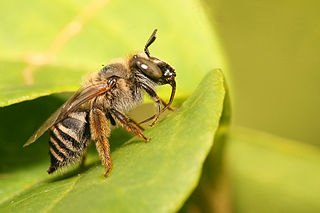
Tetraloniella is a genus of long-horned bees in the family Apidae. There are more than 100 described species in Tetraloniella with most being from North America
Sphecodosoma is a genus of sweat bees in the family Halictidae. There are at least three described species in Sphecodosoma.
Syntrichalonia is a genus of exquisite long-horned bees in the family Apidae. There are at least two described species in Syntrichalonia.

Zacosmia is a genus of digger and cuckoo bees in the family Apidae. There is one described species in Zacosmia, Z. maculata.
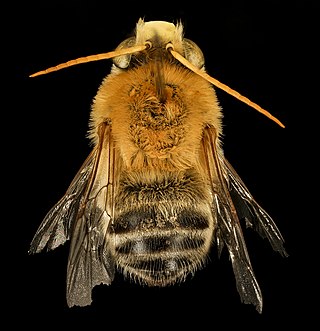
Martinapis is a genus of long-horned bees in the family Apidae. There are at least three described species in Martinapis.

Xylocopa appendiculata is a species of carpenter bee in the family Apidae.

Brachynomada is a genus of cuckoo bees in the family Apidae. There are about 17 described species in Brachynomada.
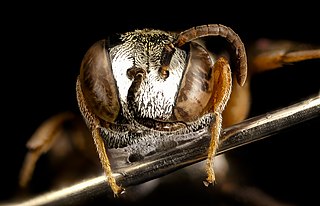
Epeolus howardi, or Howard's cellophane-cuckoo bee, is a species of cuckoo bee in the family Apidae. It is found in North America.
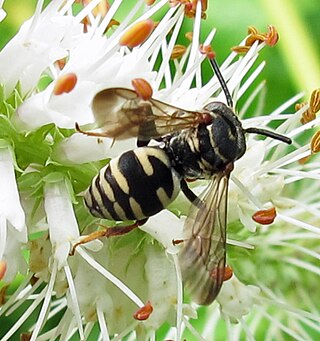
Epeolus canadensis is a species of cuckoo bee in the family Apidae. It is found in North America.
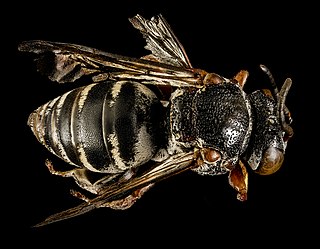
Epeolus lectoides, the cuckoo bee, is a species of cuckoo bee in the family Apidae. It is found in North America. Hosts include Colletes latitarsis and Colletes nudus.

Xenoglossa is a genus of large squash bees in the family Apidae. There are about 11 described species in Xenoglossa.

Chelostoma campanularum, or the harebell carpenter bee, is a species of hymenopteran in the family Megachilidae. It is found in Europe and Northern Asia and North America.

Augochloropsis is a genus of brilliant metallic, often blue-green, sweat bees in the family Halictidae. There are at least 140 described species in Augochloropsis.
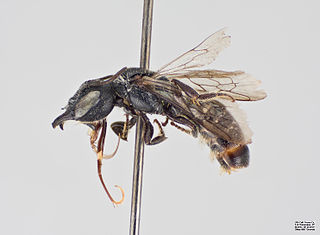
Protosmia is a genus of subgenus Chelostomopsis in the family Megachilidae. There are more than 30 described species in Protosmia.
















